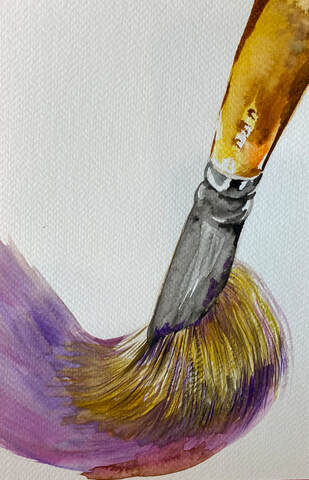Handout on choosing art media in the early childhood classroom -Without representational efforts there can be no expressive communication of a visual language. How can we nurture those early symbols of meaning in the best possible way?
-Let us look at how art media can extend children's thinking. In his work on media languages, Forman (1994) points out that in Reggio Emilia, the basic media of drawing pens, paper, clay, and wood are used to deepen understandings of themes and concepts through representation. -Traditionally, children have been encouraged to experiment extensively with unfamiliar materials before any kind of instructional lesson is proposed (Althouse, Johnson, & Mitchell, 2003;Colbert & Taunton, 1992). -In addition to the merits of exploring the nature of different media, a range of materials and tools enables children to develop a wide range of expressive and problem-solving repertoires in two- and three-dimensional work. Playful exercises with tools may also, create innovative uses of tools in personal expression. Wet responsive materials are important because they allow for spontaneous experiences as well as the development of expression in representation. -Painting and drawing media are appropriate for graphic languages of expression. Art media can include different sizes of watercolor markers, crayons, colored pencils, pens, polymer clay, natural clay, and paper in a variety of sizes, shapes, and thickness. Young children enjoy various experiences with different kinds and sizes of brushes-even dipping a stick in paint to make experimental lines. -Teachers can support the development of fine motor skills and the coordination of movements by the appropriate organization of the art -The art setting and the organization of art materials are important for facilitating the language of art. -As a child regularly uses paint and brushes, the beginning knowledge of making strokes, mixing the colors, and covering the paper all contribute toward a repertoire of personal experience. These methodologies of art allow the child, in part, to construct a beginning understanding of the media. -As a child regularly uses paint and brushes, the beginning knowledge of making strokes, mixing the colors, and covering the paper all contribute toward a repertoire of personal experience. These methodologies of art allow the child, in part, to construct a beginning understanding of the media. -In the example at the beginning of this article, it might be more important for Eva to feel that she can create displays of bright color in a row rather than represent the vegetables of the fanner's market. -Although many of the easel paintings of young children may appear to be absolutely meaningless, the intentions of Eva's actions should not be ignored. For this child, coming to familiar art materials and creating small fields of color can be compared to learning to write the first letters of her name. -That elusive personal connection is the driving force behind the emergent symbols. Children who regularly engage in many media experiences seem to acquire a knowledge base of tools and media before they can attach personal meaning to their work.
0 Comments
Leave a Reply. |
Myungja Anna KohArtist Categories
All
Archives
July 2024
|
Proudly powered by Weebly


 RSS Feed
RSS Feed